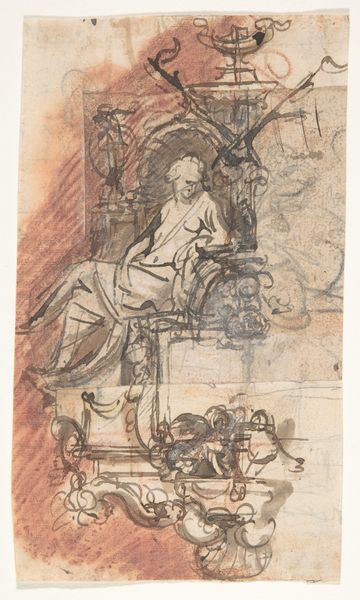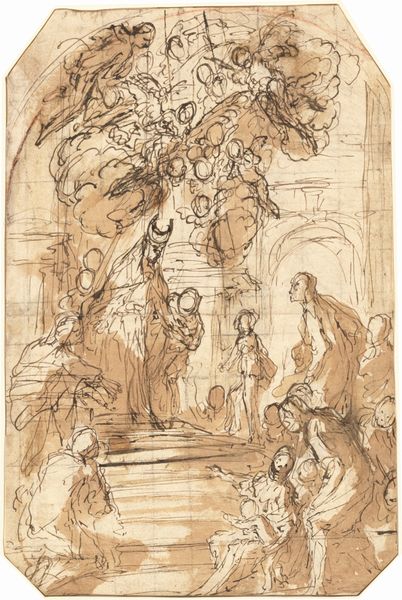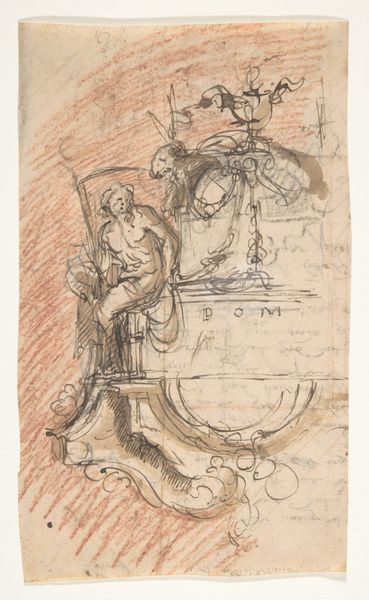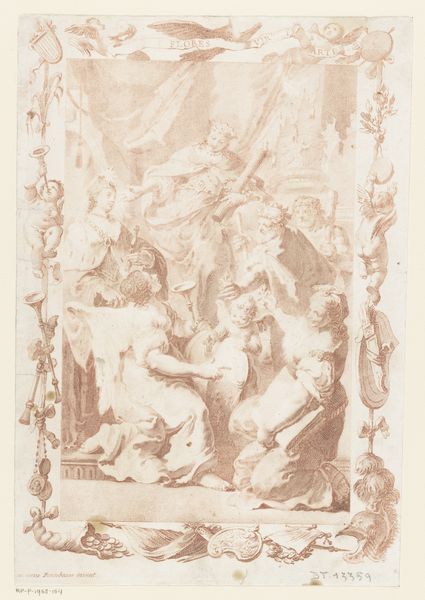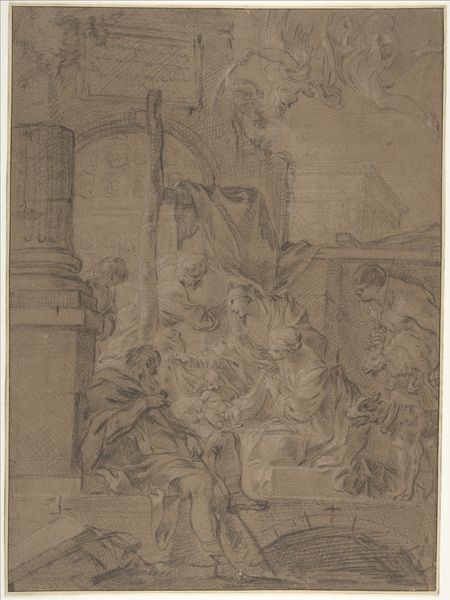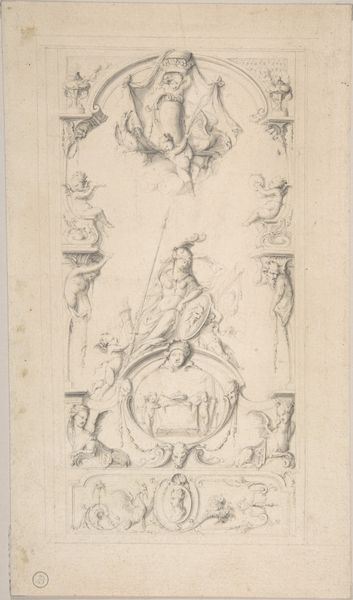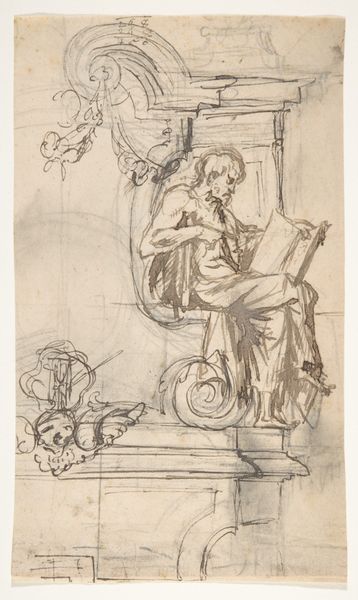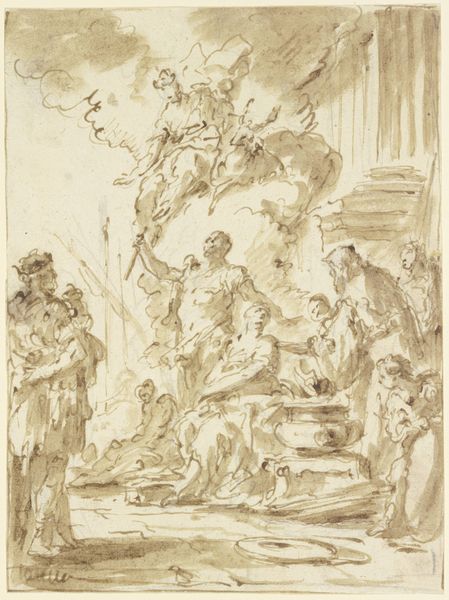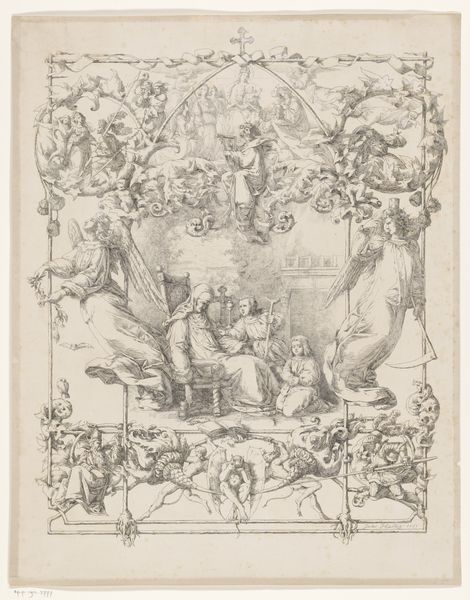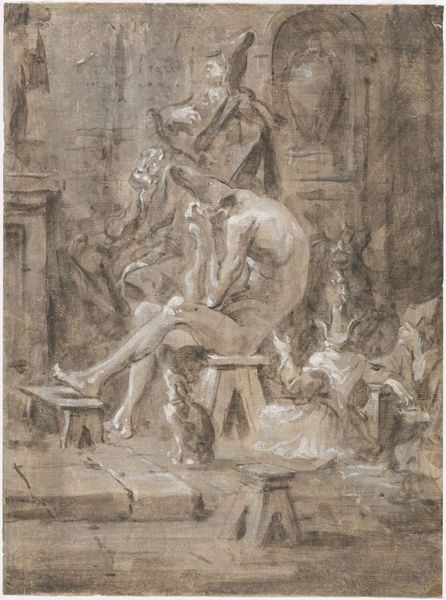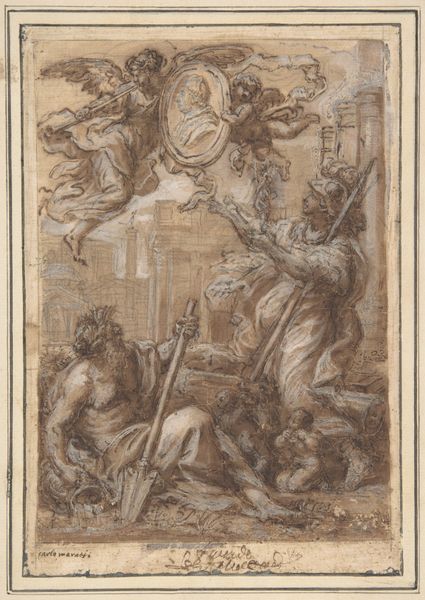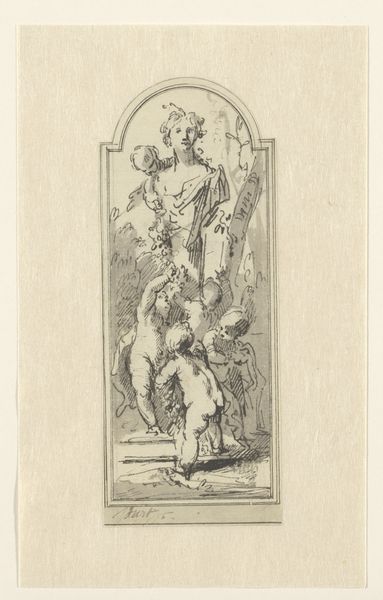
Design for a sculptural group with God the Father in a niche 1686 - 1724
0:00
0:00
drawing, print, ink
#
drawing
#
ink drawing
#
baroque
# print
#
figuration
#
ink
#
history-painting
Dimensions: sheet: 7 15/16 x 6 in. (20.2 x 15.2 cm)
Copyright: Public Domain
Curator: Let’s explore this study titled “Design for a Sculptural Group with God the Father in a Niche,” attributed to Pieter Verbruggen the Younger, likely dating between 1686 and 1724. Editor: Immediately, I am struck by the dynamism of the figures rendered in ink. The swirling lines create a sense of movement, an upward surge really, drawing the eye towards the radiant figure at the top. Curator: Absolutely, and it’s important to consider this within the context of late Baroque art, especially in the region we now know as Belgium. Verbruggen’s family workshop dominated sculpture production in Antwerp, deeply intertwined with religious institutions. A drawing like this was critical for winning commissions and communicating design ideas. Editor: Note the almost frantic energy in the hatching and cross-hatching, giving depth to the folds of drapery and the clouds beneath the figures. Light seems to emanate from God the Father, defined not by strict realism but by these suggestive marks. Curator: These designs are less about achieving a perfectly naturalistic likeness and more about projecting power. Consider that holding the orb as a sign of global dominion. This wasn’t merely a devotional image, it was a bold assertion of divine and, by extension, Church authority, a prevalent theme in post-Reformation Europe. Editor: It’s clever how Verbruggen uses washes to create depth within the niche. The architectural elements themselves are lightly sketched, serving as a frame rather than competing for attention with the divine figures. The design prioritizes dramatic impact over precise architectural detail. Curator: Right, this was most likely intended for a grand scale—a large sculptural program within a church or chapel. Imagine it in marble or stucco, elevated high above the viewer, bathed in candlelight. It served the socio-political function to awe, inspire, and reinforce a specific religious doctrine. Editor: I appreciate how this study distills so much into a few skillful lines. The essence of Baroque exuberance is here—motion, emotion, and the suggestion of heavenly light, even on this humble piece of paper. Curator: Indeed, examining this artwork through both the formal techniques and socio-political function shows just how the Catholic Church was such an important patron of the arts at the time. It served as both propaganda, as well as devotion, in design.
Comments
No comments
Be the first to comment and join the conversation on the ultimate creative platform.
